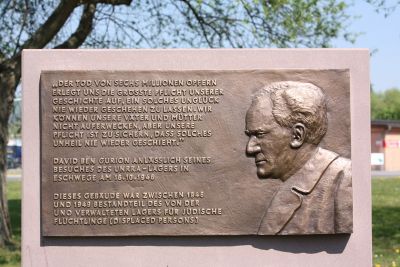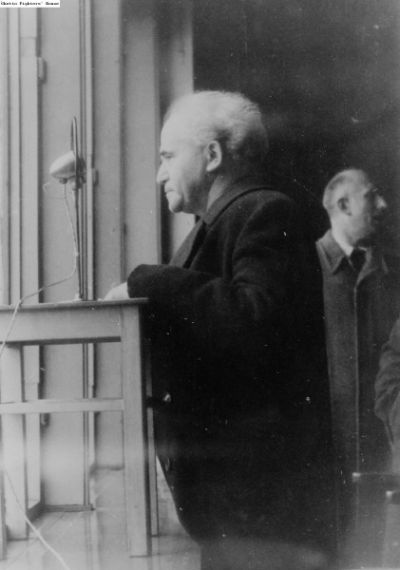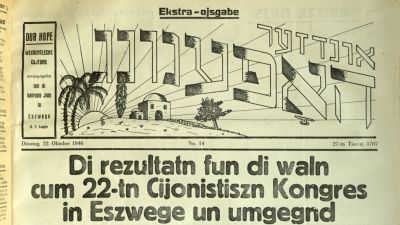The DP camp in Eschwege

Like other DP camps which were established in North Hesse after the end of the war, Eschwege quickly became a cultural centre for Yiddish-language Jewish life. The camp initially consisted of barracks from a former military airfield to the east of the city of Kassel. Shortly after it was opened in 1946, more than 1,700 people had already found refuge there; by the end of that same year, the number had risen to over 3,000. The building plans for the temporary houses, which were drawn up in July 1946[1] by the architects of Team 522 of the United Nations Relief and Rehabilitation Administration (UNRRA) have been preserved, and give us a general idea of the size of the camp. Several education facilities for children were planned, in the form of kindergartens, a primary school, and also religious schools for all age groups (a cheder, Talmud Torah, yeshiva and Bet Ya’akov). In one kibbutz on the former airfield, where fruit and vegetables were grown, the pioneers were trained in field cultivation in preparation for the life in “Eretz Israel”, in the League of Nations’ Mandate for Palestine. The camp contained several synagogues, sports clubs, a cinema and an auditorium, and had its own theatre group as well as a newspaper published in Yiddish: Undzer Hofenung[2]. One of the refugees who founded the newspaper was Mordechai Dunetz, who was born in Poland. In a video, he explained[3] that it was necessary to improvise in order to be able to print the Yiddish Zionist newspaper using German equipment and a press that only contained Latin letters.
The later Prime Minister of Israel, David Ben-Gurion, visited the UNRRA camp on 16 October 1946. The event is documented in several photographs. During that time, Ben-Gurion was actively trying to persuade Jews who had survived the Holocaust to emigrate to Palestine. His visit is also officially commemorated in the town by a large, bronze memorial plaque. Unveiled in 2012, the plaque marks the site of a former building in the large DP camp, which now houses the Eschwege tax office. The plaque shows an embossed head of Ben-Gurion and a quote in which he speaks of the duty to ensure that “such an atrocity” as the murder of the European Jews “never occurs again”. The monument was created by the artist Ruth Lahrmann on behalf of the town of Eschwege.
[1] HHStAW stock 531 (OFD FFM) No. 543: Conversion and expansion of the former Fliegerhorst Eschwege airfield to create a DP camp and to accommodate 6,000 Jewish Displaced Persons (UNRRA Team 522 Eschwege).
[2] Kesper, Dieter E. (ed.): Unsere Hoffnung. Das Schicksal Überlebender des Holocaust im Spiegel einer Lagerzeitung von 1946, published by residents of the Displaced Persons camp on the site of the former military airfield in Eschwege, Eschwege 1996. See https://blog.sbb.berlin/neuerwerbung-dp-literatur-undzer-hofenung-eschwege-1946-1947/ (last accessed on 4/11/2022).
[3] Mordechai Dunetz was interviewed on 25 June 2014 as part of the Yiddish Book Center’s Wexler Oral History Project: https://www.youtube.com/watch?v=raKgJhE9Sak (last accessed on 4/11/2022). A longer version of the interview is available here: https://www.yiddishbookcenter.org/collections/oral-histories/interviews/woh-fi-0000564/mordechai-dunetz-2014 (last retrieved on 4/11/2022).




